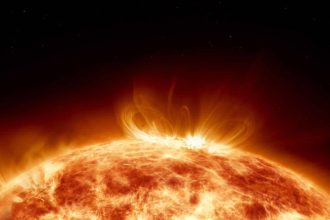A noteworthy development in Earth’s rotation has prompted a warning from Graham Jones, an astrophysicist at the University of London, who indicates that the planet is speeding up and may soon experience the shortest day in history. According to Jones, this phenomenon could manifest on one of three potential dates: July 9, July 22, or August 5, with expected reductions in time of 1.30, 1.38, or 1.51 milliseconds respectively.
While these changes may seem trivial, researchers stress that they could impact a range of systems, from satellite navigation and GPS precision to our very measurement of time. Leonid Zotov, a colleague from Moscow State University, stated, ‘Nobody expected this; the cause of this acceleration is not explained.’ Since 2020, scientists have observed a slight increase in Earth’s rotation speed, but the underlying reasons remain elusive.
Historically, Earth’s spin has been gradually slowing due to the gravitational influence of the moon, which has extended our 24-hour day. A full rotation of Earth typically takes 24 hours or precisely 86,400 seconds, known as a solar day. The current record for the fastest day was set on July 5, 2024, when Earth’s rotation outpaced the standard duration by 1.66 milliseconds.
Earth’s rotational speed is not constant; it can fluctuate by small amounts due to various natural phenomena such as earthquakes, ocean currents, and climatic patterns. Factors like melting glaciers, movements within the molten core, and significant weather events like El Niño can also influence daily rotation rates. These variations are meticulously recorded using atomic clocks, which provide a more accurate time measurement than conventional timekeeping devices.
As researchers investigate this latest shift, they are focusing on several factors that could influence Earth’s rotation, including the dynamics of molten layers within the core, ocean currents, and high-altitude wind patterns. Earth is not uniformly solid; its core consists of hot, swirling liquid metal, and as this molten metal shifts, it can alter the planet’s shape and balance, in a manner akin to how a figure skater accelerates by pulling their arms inward.
Since 2020, records for the shortest days have been repeatedly broken. Notable instances include July 19, 2020, which was 1.47 milliseconds short, and similar records were observed on July 9, 2021, and June 30, 2022, when the day lost 1.59 milliseconds. In 2023, the rotation slowed a bit without new records, but the trend picked up again in 2024, marking it as the year with the most significantly brief days recorded.
As these observations are based on historical data and advanced computer modeling, any change in the length of a day, even by mere milliseconds, holds considerable importance. Technologies such as GPS, mobile networks, and financial systems depend on precise timing, and even slight variations can trigger significant glitches.
Currently, global timekeeping is standardized through Coordinated Universal Time (UTC), occasionally adjusted with leap seconds to synchronize with Earth’s gradual shifts. If Earth continues to rotate faster, there is a possibility that for the first time, a negative leap second may need to be introduced to accommodate the changes.
Over billions of years, Earth’s rotation has decelerated from a time when days lasted mere hours due to the moon’s gravitational pull. Today, however, internal factors might be contributing to a renewed increase in speed. Despite these intriguing developments, researchers reveal that existing atmospheric and oceanic models do not fully account for the current acceleration trend. Zotov stated, ‘Sooner or later, Earth will decelerate,’ yet for the moment, this remarkable spin continues to escalate.












